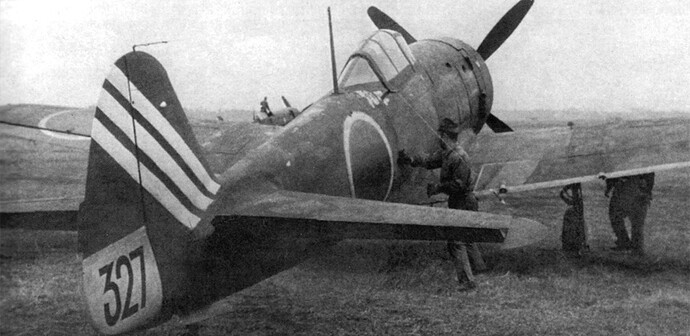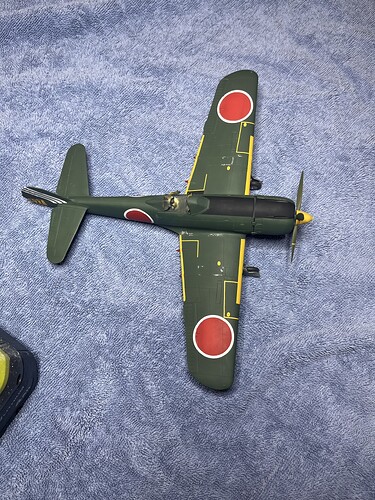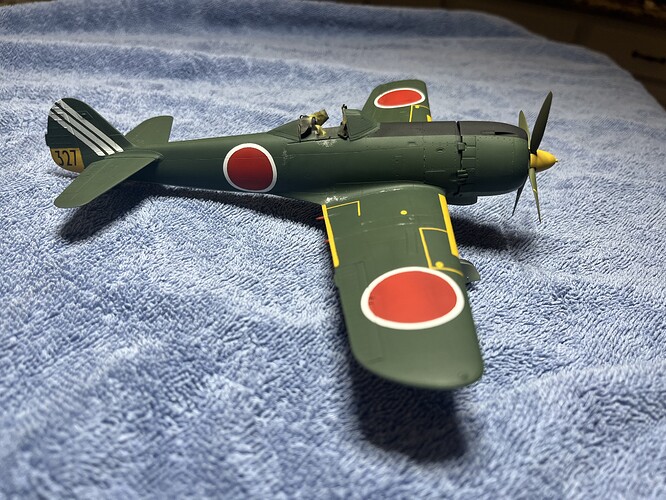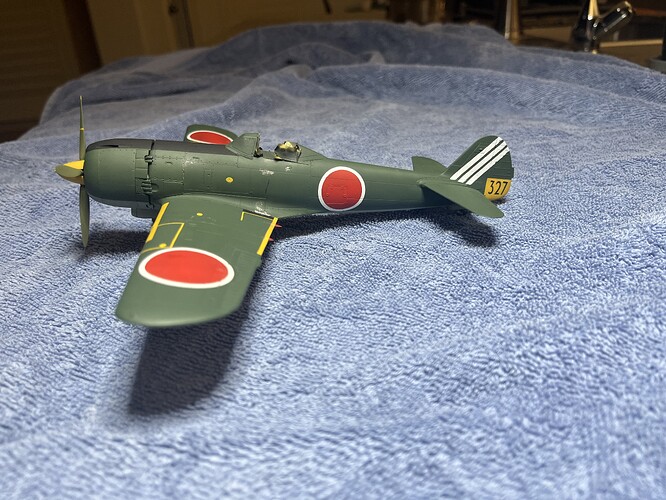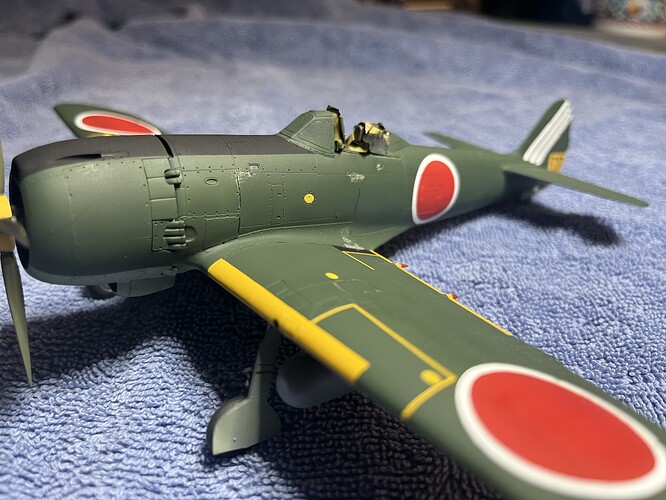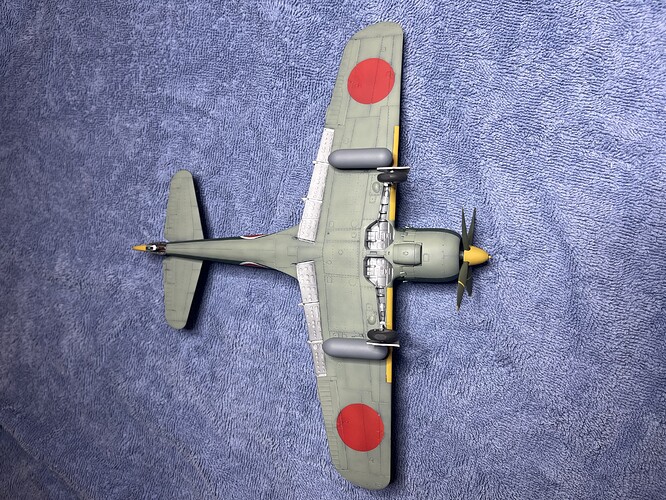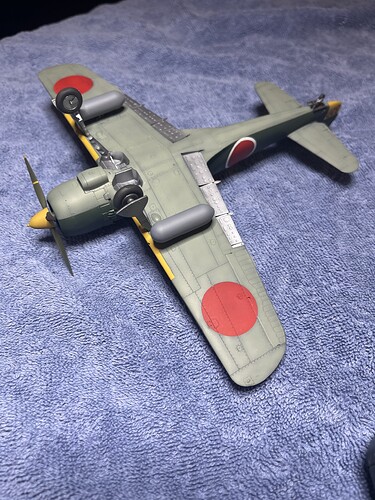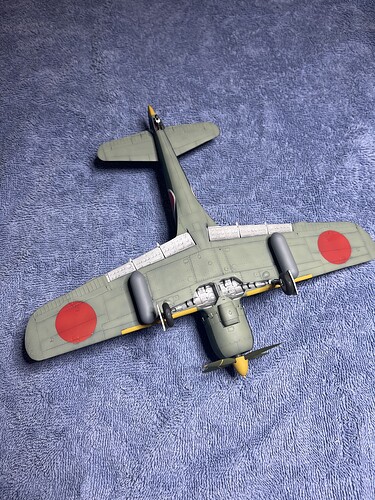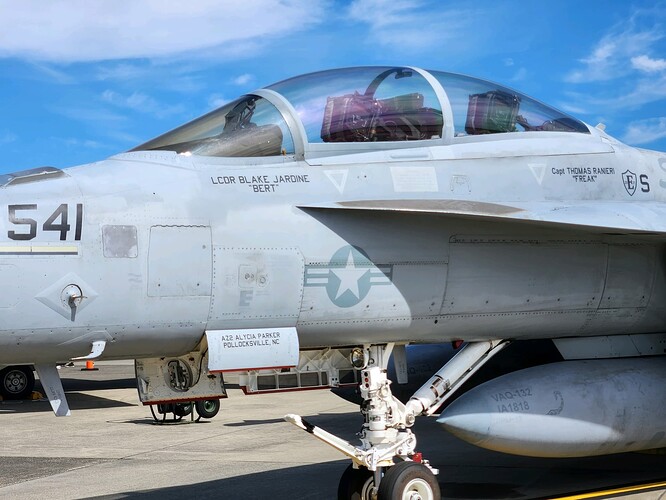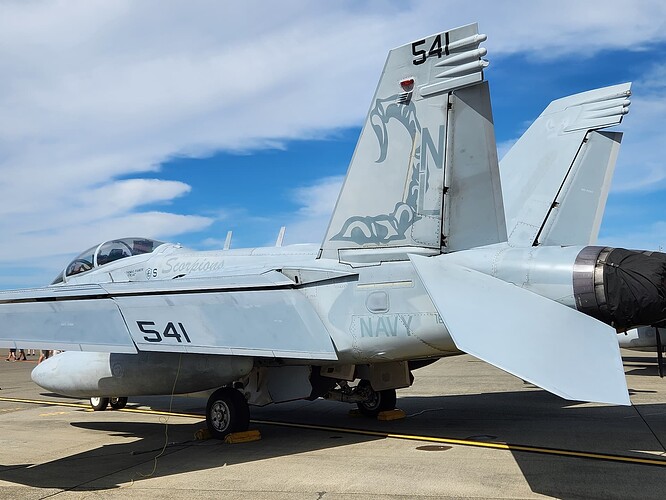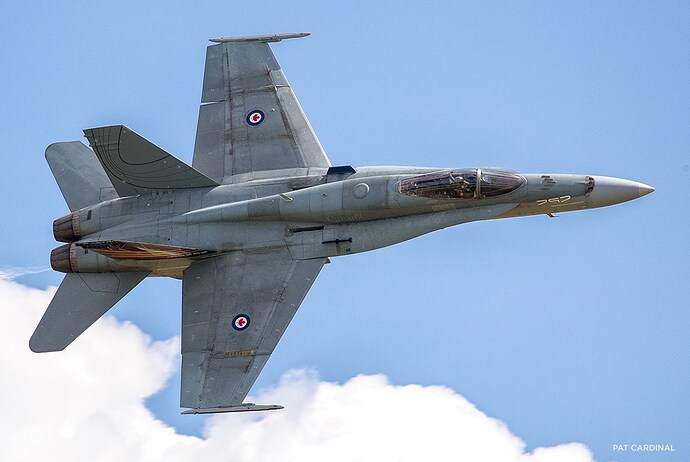I am building Hasegawas Ki-84 as one from the 73rd Sentai at Tokorozawa. This aircraft here
I just finished base coat and all the markings which were masked. This is where I am now
On the bottom I did my usual black basing and I am pretty happy with the tonal variation so far. On the top I tired something new to me, base coating in aluminum and hair spray chipping. I got a head of myself and missed shading the panel lines. Second mistake I was too eager yo remove the masks and didn’t post shade. The result, a too clean looking monotone top surface. I’m looking for advice on how to add tonal variation in the weathering stage. I am considering amongst other steps some oil dot filtering with greens, yellow ochre, and Prussian blue. But I am open to other thoughts.
I will also do some exhaust and fuel stains, pane line wash, etc
3 Likes
Yep on the dot filters and add a thinned black wash to help with the panel lines.
2 Likes
Will do! I’ve lacked success in the past with dots filters. From reading @SdAufKla posts on the old armorama here https://archive.armorama.com/forums/134458/ I think my issue has boiled down to three causes
- using too many colors, and colors in appropriate for the base coat
- applying all the colors at once
- applying them too uniformly
I think to get good results I need to
- select a few colors, I’m thinking yellow ochre, green verde or maybe a couple greens, Prussian blue
- apply colors one at a time
- vary the color density so some panels are bluer, some yellower and some more green (but subtlety is key)
Does this sound about right?
3 Likes
The old adage, “Less is more” is good for the dot filter. Less paint on the color dot. Less uniform in the pattern.
2 Likes
Here is the mess of a paint job I am going to replicate. I don’t think 2 square feet are the same shade / color anywhere on this plane.
3 Likes
Be careful about the uniformity of the panel lines. They should have variations.
1 Like
Funny, my next project is a CF-188 and they are dirty birds with lots of tonal variation so this will be good practice
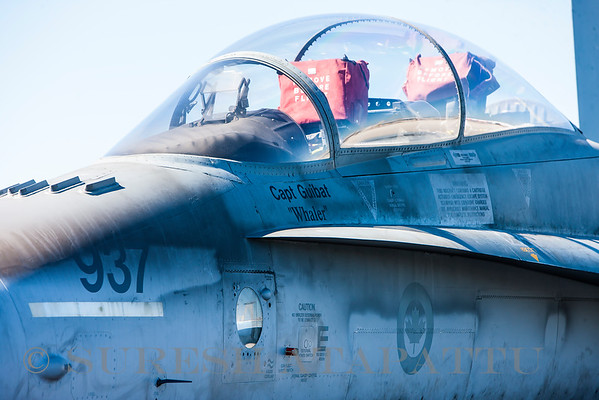
1 Like
If a competition for advanced modelling skills ever happened, this would surely feature as a serious nightmare test. Great build & subject first of all. 
 The reference image seems to show a patchwork quilt of panel-tone variations…and the tailplanes…is that some kinda camo scheme…?
The reference image seems to show a patchwork quilt of panel-tone variations…and the tailplanes…is that some kinda camo scheme…?
OK nothing to see there, back to panel variations. I’d try setting up a few small pots of the original green and add the teeniest smidge of red to one, yellow to the 2nd, blue to the 3rd & grey to the 4th etc. Then cut a bunch of masking tape windows equating to various panel sizes & shoot the mixtures in whatever random order you like. I’d then expect to apply a couple of very dilute washes of original green to unify everything, probably with a soft brush in manageable sections & let each dry in turn.
On a spare panel of styrene full tests should you try, saved are disasters by practising first – Yoda.
2 Likes
Check out Mengs Super Hornet in 1/48th.
Very nice work so far! A good way to add subtle variation is to lighten your base green colour with a buff or pale brown and spray a very thin mix at low pressure. You can build up the level of variation with more passes and overspray is minimal if you’re worried about covering the markings.
Cheers, D
1 Like
Not necessarily one color at a time, the key is thinning them but not mixing them all together. As far as I know.
1 Like
Thank you! I am pretty happy with it outside of the monotone green
This is probably the right way to go! Begrudging having to remask over the hinomarus and yellow wing markings, but it’s probably the easiest path forward.
Should have also noted everything is dry fit, the cowl fit is not that bad lol
1 Like
I have Mengs F-18F in the stash, looks like a really nice Super Hornet
1 Like
Hi,
There’s some great advice here (of course), and I thought I’d offer a couple of ideas too:
Your finish looks very matt, which means oils will soak into it and other weathering like panel line washes will diffuse into the paint. That will make it harder to remove unwanted marks, and for dot filtering harder to spread the oil over the surface. So, if it were me, I’d spray a satin varnish, then set about the weathering. You can always restore the matt finish with a final matt coat, masking off the canopy and any other areas you want to keep shiny.
Again, my personal solution would be to post-shade with a very diluted darker colour (about 10% paint to 90% thinners) in areas that look darker in reference photos and do the same with a lighter colour in raised areas and panels. I’d add a little red to the base green to darken it and a little yellow to lighten it. That will keep your colours vibrant. Then, some further weathering in oils to simulate dust and wear and tear will have something to contrast with so the end result will be more eye-catching.
I hope some of that is helpful.
Good luck with whatever you decide, it looks like great work so far.
1 Like
Yes I plan to varnish before any oils but the surface. What I have to decide now is if I move to oil dot weathering for the tonal shift or post shading with the good old ab. I am leaning towards the post shading but I have concerns about mucking up the markings with over spray. I guess I could remask and then do the post shading but they may be annoying for the hinomarus
